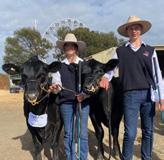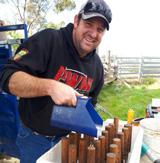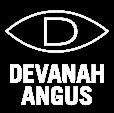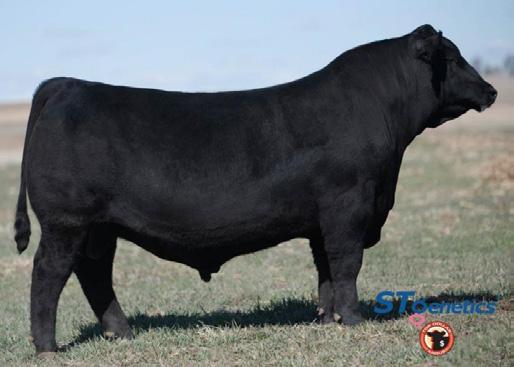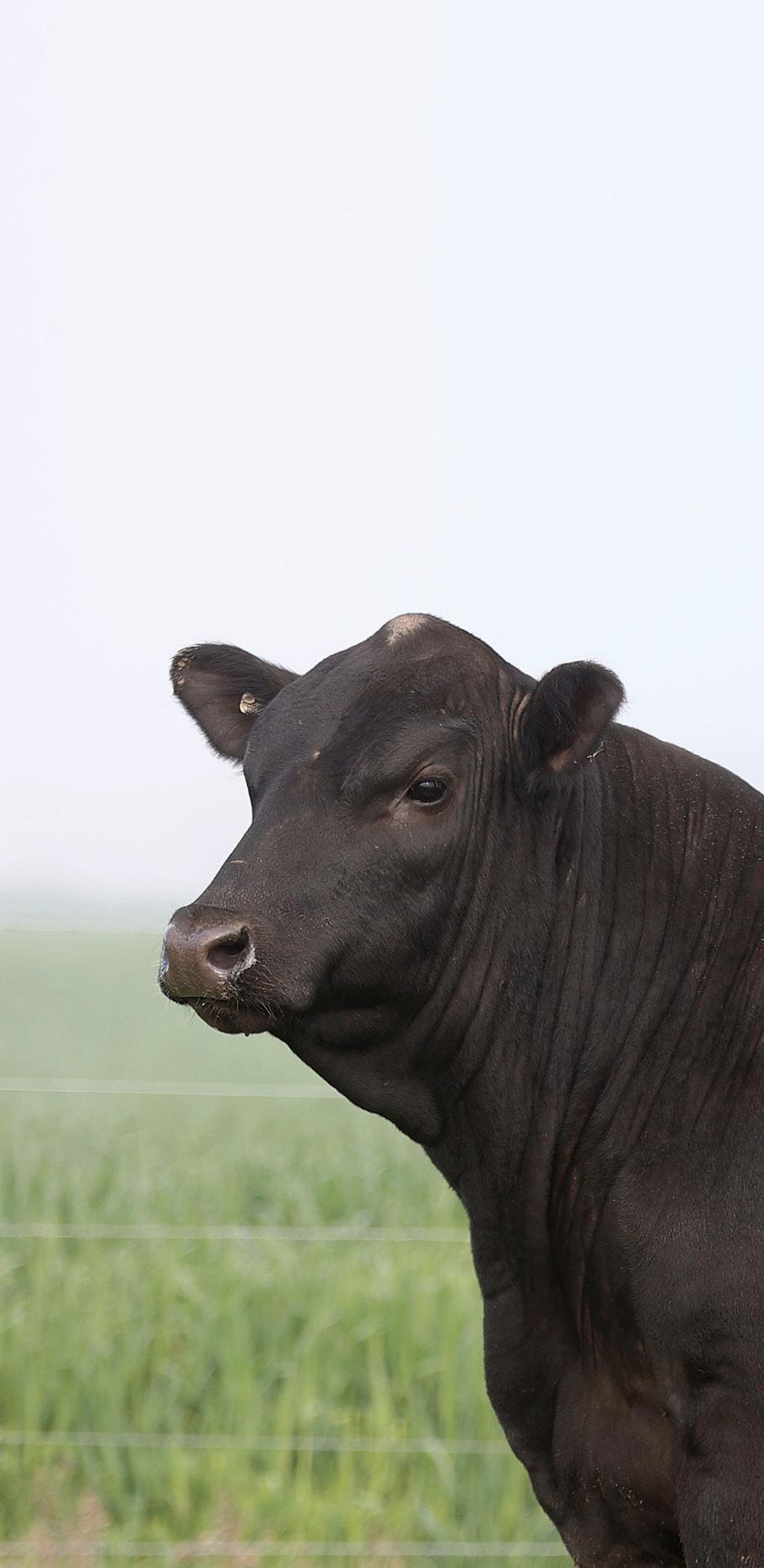
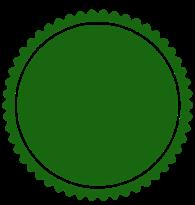
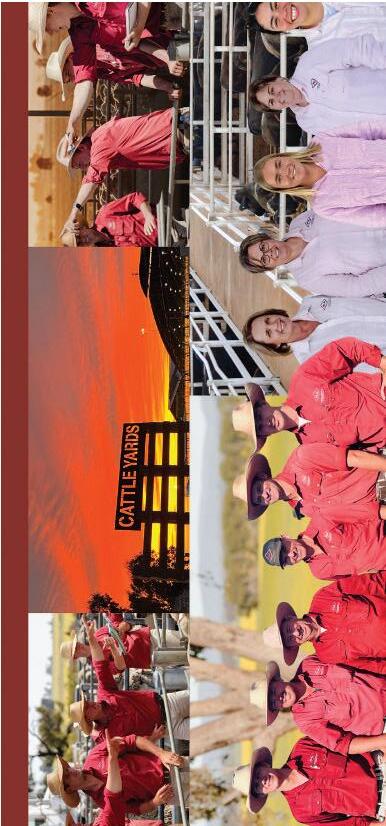








From 2nd August, by Appointment
Conducted through Elders Emms Mooney Blayney
‘Heybridge’ 166 Ledgers-Malloy Rd, FORBES NSW
From 9th September by Appointment
Conducted through Forbes Livestock ‘Heybridge’166 Ledgers-Malloy Road, FORBES
FROM FORBES 30km FROM GRENFELL 40km
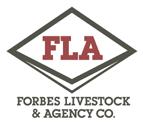
Cattle yarded at 10:30am for inspection.
Liam Murphy M: 0459 63684611 E: liam.murphy@elders.com.au
Jack Piercy
Director/Licensed Stock & Station Real Estate & Auctioneer | M: 0487 422 383
DEVANAH ANGUS
Sam Mackay
Licensed Stock & Station Real Estate & Auctioneer | M: 0400 741 731
Neil, Jo-Anne and Damien
Livestock Sales | M: 0498 761 336
P: (02) 6853 7212 M: 0409 157 077
E: njsouthorn@bigpond.com Jake Grace
P: (02) 6853 7212 | M:0409 157 077 | E:njsouthorn@bigpond.com 1
Neil and Jo-Anne Southorn
Neil, Jo-anne and Damien have been breeding cattle and selling bulls in the Central West of NSW since 1987, initially at Cudal and since 1990 at Forbes.
Our focus is supplying docile, medium framed bulls to produce long lived, fertile females and steers who do well on grass or in the feedlot. We aim at good weights, muscling and adequate IMF/fats to ensure heifer fertility and for carcases to grade into premium brands. We are very strict on culling empties and only have one calving per year.
These bulls assessed by Roger Evans No: 13411 and Lonie Stone No: 1344. All animals were weighed, scanned for eye muscle, rib and rump fat and intra muscular fat, bulls scrotal circumference and temperament, legs, feet, muscle score, and naval assessed.
All bulls have been:
• Backlined with Baymec for lice and internal parasites
• Backlined with Fasitak for fluke (an issue just arisen in recent year)
• Vaccinated with 8 in 1 for year round protection against clostridial diseases
• Vaccinated with Piliguard to help with Pink Eye infection
• Vaccinated with Pestiguard
• Vaccinated with Lepto Shield
• Vaccinated with Bovilis MH + IBR
We were MN3 for Johnes Disease for a number of years until that scheme was discontinued. Since then we have chosen to be JBAS-6. Our Biosecurity program is overseen by Forbes Veterinary Clinic.
We have run these animals together since weaning and have aimed at having them in forward condition, fit and ready to work. They still have a couple of years before they reach their mature size, so they need to be looked after to ensure they grow to their genetic potential.
Regards, Neil , Jo and Damien
VISITORS ENTER THE CATTLE PENS AT THEIR OWN RISK
CHILDREN MUST NOT ENTER THE YARDS
All due care and attention has been taken by the vendors to ensure that the information provided in this catalogue is correct at the time of publication However, no responsibility is taken by us or the selling agents for any inadvertent errors or omissions.
Please insure your animals as they are your responsibility at the conclusion of the sale.
We will deliver free in the Central West. Trucking elsewhere can be organised for you by Forbes Livestock or the Vendor if required.
All animals will be transferred by the vendor with relevant Society at your instruction.
All bulls will be inspected for soundness and fertility shortly before sale. However, if 12 months after delivery the bull is proved to be infertile or incapable of natural service, we will offer a suitable replacement or credit the purchase price to be used at a future date (less the salvage value of the bull). This is provided the problem was not caused after delivery. The claim must be accompanied by a relevant veterinary certificate.
A 2% rebate commission offered to outside agents introducing buyers in writing 24 hours prior to the sale and settling for same within 7 days of invoice.
Animal details included in this catalogue, including but not limited to pedigree, DNA information, Estimated Breeding Values (EBVs) and Index values, are based on information provided by the breeder or owner of the animal. Whilst all reasonable care has been taken to ensure that the information provided in this catalogue was correct at the time of publication, Angus Australia will assume no responsibility for the accuracy or completeness of the information, nor for the outcome (including consequential loss) of any action taken based on this information.
The animals listed within this catalogue including its pedigree, are displaying a Parent Verification Suffix which indicates the DNA parent verification status that has been conducted on the animal. The Parent Verification Suffixes that will appear at the end of each animal’s name are as follows:
PV: both parents have been verified by DNA
SV: the sire has been verified by DNA
DV: the dam has been verified by DNA
#: DNA verification has not yet been conducted
E: DNA verification has identified that the sire and/or dam may possibly be incorrect, but this cannot be confirmed conclusively.
In order for Angus Australia to process the transfer of a registered animal in this catalogue, the vendor will need to provide certain information to Angus Australia and the buyer consents to the collection and disclosure of that information by Angus Australia in certain circumstances. If the buyer does not wish for his or her information to be stored and disclosed by Angus Australia, the buyer must complete the form included below and forward it to Angus Australia. If the form is not completed, the buyer will be taken to have consented to the disclosure of such information.
If you do not complete this form, you will be taken to have consented to Angus Australia using your name, address and phone number for the purposes of effecting a change of registration of the animal(s) that you have purchased, maintaining its database and disclosing that information to its members on its website.
I, the buyer of animals with the following idents……………………………………………..........
from member……………………………………………………………….(name) do not consent to Angus Australia using my name, address and phone number for the purposes of effecting a change of registration of the animals I have mentioned above that I have purchased, maintaining its database and disclosing that information to its members on its website.
Name: …………………………………………………………………….. Date: ……………………………………...
Signature: ……………………………...............................................................................................................
Please forward this completed consent form to Angus Australia, 86 Glen Innes Road, Armidale NSW 2350.



Animal ID: GTNQ135
Date of Birth: 06/08/2019
Mating Type: AI
Sex: M
Register: HBR
Genetic Conditions: AMF,CAF,DDF,NHF,DWF,MAF,MHF,OHF,OSF,RGF
Traits Observed : GL,CE,BWT,400WT,Genomics
Selection Indexes
ABI DOM GRN GRS $220 $186 $306 $195
C R A BEXTOR 872 5205 608#
G A R OBJECTIVE 1885# USA17960722 BALDRIDGE BEAST MODE B074PV
STYLES UPGRADE J59#
BALDRIDGE ISABEL Y69#
BALDRIDGE ISABEL T935#
G A R SOLUTIONSV
LAWSONS INVINCIBLE C402PV
LAWSONS PREDESTINED A598 #
GTNK44 CHILTERN PARK K44PV
TE MANIA BOSWELL B932SV
STRATHEWEN BOSWELL VICKY E21PV
STRATHEWEN RIGHTIME VICKY C91PV
Mid August 2025 TransTasman Angus Cattle Evaluation

Statistics: Number of Herds: 40, Prog Analysed: 662, Genomic Prog: 370
Animal ID: NXTN003
Date of Birth: 29/06/2017
Mating Type: AI
Sex: M
Register: APR
Genetic Conditions: AMF,CAF,DDF,NHF,DWF,MAF,MHF,OHF,OSF,RGF
Traits Observed : CE,BWT,200WT,400WT(x2),600WT (x2),SC,Scan(EMA,Rib,Rump,IMF) ,Structure(Claw Set x 1, Foot Angle x 1),Genomics
Selection Indexes
ABI DOM GRN GRS $209 $185 $253 $200
BOOROOMOOKA UNDERTAKEN Y145PV
RENNYLEA EDMUND E11PV
LAWSONS HENRY VIII Y5SV
NAQH255 ARDROSSAN HONOUR H255PV
ARDROSSAN EQUATOR A241PV
ARDROSSAN WILCOOLA D17PV
ARDROSSAN WILCOOLA X2#
ARDROSSAN EQUATOR D19SV
TWYNAM H176SV
TWYNAM B455 # NXTL161 TWYNAM L161#
MURRAY 1407 Z366SV
TWYNAM C98#
TWYNAM A352#
Mid August 2025 TransTasman Angus Cattle Evaluation

Statistics: Number of Herds: 1, Prog Analysed: 95,
Animal ID: NJS21S15
Date of Birth: 01/03/2021
Mating Type: AI
Sex: M
Register: HBR
Genetic Conditions: AMF,CAF,DDF,NHF,DWF,MAF,MHF,OHF,OSF,RGF
Traits Observed : GL,BWT,200WT,400WT,600WT,SC, Scan(EMA,Rib,Rump,IMF), Genomics
Selection Indexes
ABI DOM GRN GRS $257 $216 $333 $243
CONNEALY IN SURE 8524#
G A R SURE FIRESV
CHAIR ROCK 5050 G A R 8086# USA18636106 G A R PHOENIXPV
G A R PROPHETSV
G A R PROPHET N744#
G A R DAYBREAK 440#
HYLINE RIGHT TIME 338# THE GRANGE WHEEL WRIGHT D6PV
IMRAN MISS VEGAS U20 #
QHEJ100 CARABAR HEATHER J100SV
VERMILION YELLOWSTONE#
CARABAR HEATHER D103#
CARABAR HEATHER Z6SV
Mid August 2025 TransTasman Angus Cattle Evaluation

Statistics: Number of Herds: 6, Prog Analysed: 86, Genomic Prog: 45
Animal ID: NJS22T48
Date of Birth: 08/03/2022
Mating Type: AI
Sex: M
Register: HBR
Genetic Conditions: AMF,CAF,DDF,NHF,DWF,MAF,MHF,OHF,OSF,RGF
Traits Observed : GL,BWT,200WT,400WT,SC,Scan(EMA,Rib,Rump,IMF),Structure(Claw Set x 1, Foot Angle x 1),Genomics
Selection Indexes ABI DOM GRN GRS $253 $209 $333 $238
TE MANIA CALAMUS C46SV
TE MANIA FOE F734SV
TE MANIA DANDLOO D700#
GTNM6 CHILTERN PARK MOE M6PV
HIDDEN VALLEY TIMEOUT A45SV
STRATHEWEN TIMEOUT JADE F15PV
STRATHEWEN 1407 JADE C05PV
TE MANIA BERKLEY B1PV
PATHFINDER GENESIS G357PV
PATHFINDER DIRECTION D245 SV
NJSQ2 DEVANAH VELVET Q2PV
ROSELEIGH DUPONT D27PV
STONEY POINT VELVET J158SV
STONEY POINT VELVET D244#
Mid August 2025 TransTasman Angus Cattle Evaluation

Statistics: Number of Herds: 7, Prog Analysed: 61, Genomic
Animal ID: USA20092065
Date of Birth: 09/01/2021
Mating Type: Natural
Sex: M
Register: HBR
Genetic Conditions: AMF,CAF,DDF,NHF,DWF,MAF,MHF,OHF,OSF,RGF
Traits Observed : Genomics
BALDRIDGE XPAND X743#
BALDRIDGE COLONEL C251#
BALDRIDGE ISABEL Y69# USA19195196 SYDGEN KCF GAVEL 8361#
K C F BENNETT FORTRESSPV
K C F MISS FORTRESS B398#
K C F MISS SOUTHSIDE Z541#
SYDGEN C C & 7# HOOVER DAM#
ERICA OF ELLSTON C124 # USA18265366 FOXHOVENS KINTRY ANNIE 532PV
Selection Indexes
ABI DOM GRN GRS $271 $224 $357 $256
VIN-MAR O’REILLY FACTOR#
FOXHOVENS KINTRY ANNIE 315#
FOXHOVENS KINTRY ANNIE 181#
Mid August 2025 TransTasman Angus Cattle Evaluation

Statistics: Number of Herds: 7, Prog Analysed: 37, Genomic Prog: 8
Animal ID: NMMP15
Date of Birth: 29/01/2018
Mating Type: AI
Sex: M
Register: HBR
Genetic Conditions: AMF,CAF,DDF,NHF,DWF,MAF,MHF,OHF,OSF,RGF
Traits Observed : GL,BWT,200WT(x2),400WT(x2),Scan(EMA,Rib,Rump,IMF),DOC,Genomics
Selection Indexes
BASIN FRANCHISE P142#
EF COMPLEMENT 8088PV
EF EVERELDA ENTENSE 6117#
USA17082311 EF COMMANDO 1366PV
B/R AMBUSH 28#
RIVERBEND YOUNG LUCY W1470#
RIVERBEND YOUNG LUCY T1080#
HIGHLANDER OF STERN AB#
MILLAH MURRAH HIGHLANDER G18SV
MILLAH MURRAH PRUE D85 PV NMMM9 MILLAH MURRAH ELA M9PV
MATAURI REALITY 839#
MILLAH MURRAH ELA K127SV
MILLAH MURRAH ELA G88SV
Mid August 2025 TransTasman Angus Cattle Evaluation

Statistics: Number of Herds: 363, Prog Analysed: 7498, Genomic Prog: 5652
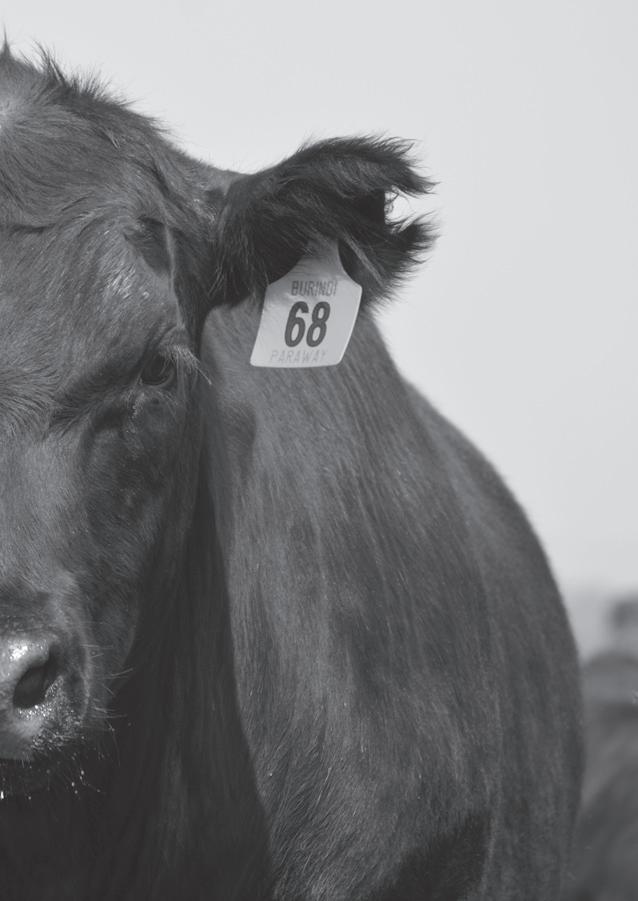

This is information for bull buyers about the recessive genetic conditions, Arthrogryposis Multiplex (AM), Hydrocephalus (NH), Contractural Arachnodactyly (CA) and Developmental Duplications (DD).
Putting undesirable Genetic Recessive Conditions in perspective
All animals, including humans, carry single copies (alleles) of undesirable or “broken” genes. In single copy form, these undesirable alleles usually cause no harm to the individual.
But when animals carry 2 copies of certain undesirable or “broken” alleles it often results in bad consequences. Advances in genomics have facilitated the development of accurate diagnostic tests to enable the identification and management of numerous undesirable or “broken” genes.
Angus Australia is proactive in providing its members and their clients with relevant tools and information to assist them in the management of known undesirable genes and our members are leading the industry in their use of this technology.
What are AM, NH, CA and DD?
AM, NH, CA and DD are all recessive conditions caused by “broken” alleles within the DNA of individual animals. When a calf inherits 2 copies of the AM or NH alleles their development is so adversely affected that they will be still-born.
In other cases, such as CA and DD, calves carrying 2 copies of the broken allele may reach full-term. In such cases the animal may either appear relatively normal, or show physical symptoms that affect their health and/or performance.
How are the conditions inherited?
Research in the U.S. and Australia indicates that AM, NH, CA and DD are simply inherited recessive conditions. This means that a single gene (or pair of alleles) controls the condition.
For this mode of inheritance two copies of the undesirable allele need to be present before the condition is seen; in which case you may get an abnormal calf. A more common example of a trait with a simple recessive pattern of inheritance is black and red coat colour.
Animals with only one copy of the undesirable allele (and one copy of the normal form of the allele) appear normal and are known as “carriers”. What happens when carriers are mated to other animals?
Carriers, will on average, pass the undesirable allele to a random half (50 %) of their progeny.
When a carrier bull and carrier cow is mated, there is a 25% chance that the resultant calf will inherit two normal alleles, a 50% chance that the mating will result in a carrier (i.e. with just 1 copy of the undesirable allele, and a 25% chance that the calf will inherit two copies of the undesirable gene.
If animals tested free of the undesirable gene are mated to carrier animals the condition will not be expressed at all. All calves will appear normal, but approximately half (50%) could be expected to be carriers.
How is the
DNA-based diagnostic tests have been developed which can be used to determine whether an individual animal is either a carrier or free of the alleles resulting in AM, NH, CA or DD.
Angus Australia uses advanced software to calculate the probability of (untested) animals to being carriers of AM, NH, CA or DD. The software uses the test results of any relatives in the calculations and the probabilities may change as new results for additional animals become available.
The genetic status of animals is being reported using five categories:
AMF Tested AM free
AMFU Based on Pedigree AM free - Animal has not been tested
AM_% _% probability the animal is an AM carrier
AMC Tested AM-Carrier
AMA AM-Affected
For NH, CA and DD, simply replace AM in the above table with NH, CA or DD.
Registration certificates and the Angus Australia web-database display these codes. This information is displayed on the animal details page and can be accessed by conducting an “Database Search” from the Angus Australia website or looking up individual animals listed in a sale catalogue.
Your decision on the importance of the genetic condition status of replacement bulls should depend on the genetics of your cow herd (which bulls you previously used) and whether some female progeny will be retained or sold as breeders.
Most Angus breeders are proactive and transparent in managing known genetic conditions, endeavouring to provide the best information available. The greatest risk to the commercial sector from undesirable genetic recessive conditions comes from unregistered bulls with unknown genetic background. The genetic condition testing that Angus Australia seedstock producers are investing in provides buyers of registered Angus bulls with unmatched quality assurance.
For further information contact Angus Australia’s Breed Development & Extension Manager on (02) 6773 4618.
Date of Birth: 10/03/2024
Mating Type: Natural Register: MBR Sex: M Genetic Conditions: AMFU,CAFU,DDFU,NHFU
Traits Observed : BWT,200WT,400WT,SC,S- can(EMA,Rib,Rump,IMF),Struc- ture(Claw Set x 1, Foot Angle x 1)
Mid August 2025 TransTasman Angus Cattle Evaluation

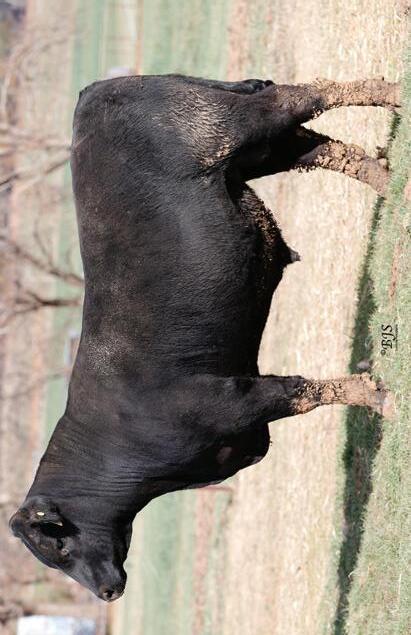
Date of Birth: 18/03/2024
Mating Type: AI
Traits Observed : GL,CE,B- WT,200WT(x2),400WT,SC,S- can(EMA,Rib,Rump,IMF),Struc- ture(Claw Set x 1, Foot Angle x 1)
Mid August 2025 TransTasman Angus Cattle Evaluation

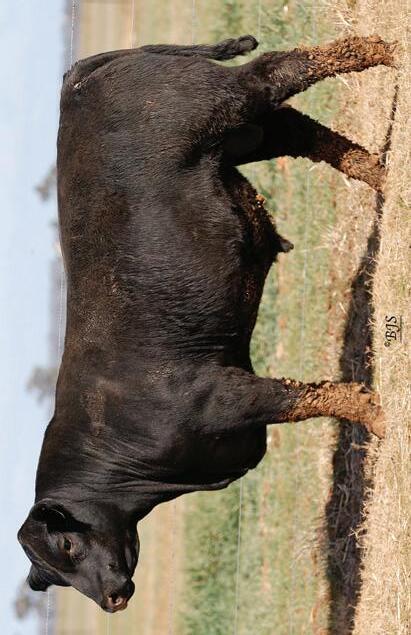
Date of Birth: 17/03/2024
Mating Type: AI Register: MBR
Traits Observed : GL,CE,B- WT,200WT(x2),400WT,SC,S- can(EMA,Rib,Rump,IMF),Struc- ture(Claw Set x 1, Foot Angle x 1)
Mid August 2025 TransTasman Angus Cattle Evaluation


Date of Birth: 17/03/2024
Traits Observed : GL,CE,B- WT,200WT(x2),400WT,SC,S- can(EMA,Rib,Rump,IMF),Struc- ture(Claw Set x 1, Foot Angle x 1)
Mid August 2025 TransTasman Angus Cattle Evaluation

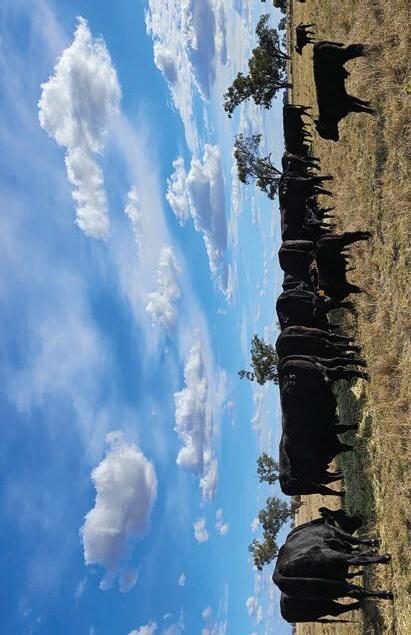
Date of Birth: 22/03/2024
Mating Type: AI Register: APR
Traits Observed : GL,CE,B- WT,200WT(x2),400WT,SC,S- can(EMA,Rib,Rump,IMF),Struc- ture(Claw Set x 1, Foot Angle x 1)
Mid August 2025 TransTasman Angus Cattle Evaluation


Date of Birth: 24/03/2024
Mating Type: Natural Register: MBR Sex: M
Traits Observed : BWT,400WT,SC,S- can(EMA,Rib,Rump,IMF),Struc- ture(Claw Set x 1, Foot Angle x 1)
Mid August 2025 TransTasman Angus Cattle Evaluation


Animal ID: NJS24V22
Date of Birth: 23/03/2024
Mating Type: Natural Register: MBR Sex: M
Traits Observed : BWT,200WT,400WT,SC,S- can(EMA,Rib,Rump,IMF),Struc- ture(Claw Set x 1, Foot Angle x 1)
Mid August 2025 TransTasman Angus Cattle Evaluation

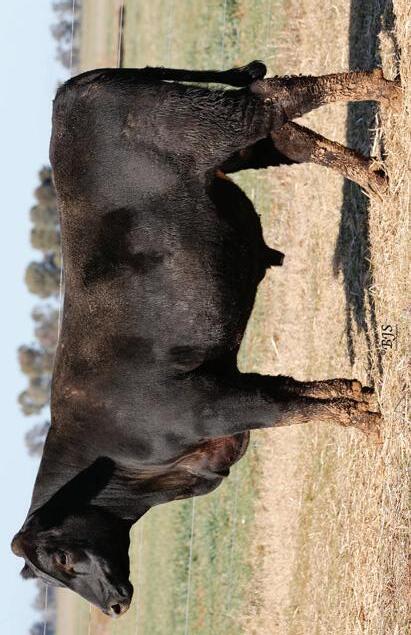
Date of Birth: 23/03/2024
Mating Type: Natural Register: MBR Sex: M Genetic Conditions: AMFU,CAFU,DDFU,NHFU
Traits Observed : BWT,200WT,400WT,SC,S- can(EMA,Rib,Rump,IMF),Struc- ture(Claw Set x 1, Foot Angle x 1)
Mid August 2025 TransTasman Angus Cattle Evaluation


Traits Observed : BWT,200WT,400WT,SC,S- can(Rib,Rump,IMF),Structure(- Claw Set x 1, Foot Angle x 1)
Mid August 2025 TransTasman Angus Cattle Evaluation


Traits Observed : GL,B- WT,200WT,400WT,SC,S- can(EMA,Rib,Rump,IMF),Struc- ture(Claw Set x 1, Foot Angle x 1) BALDRIDGE COLONEL C251 # Animal ID: NJS24V33
Date of Birth: 26/03/2024
Mating Type:
Mid August 2025 TransTasman Angus Cattle Evaluation

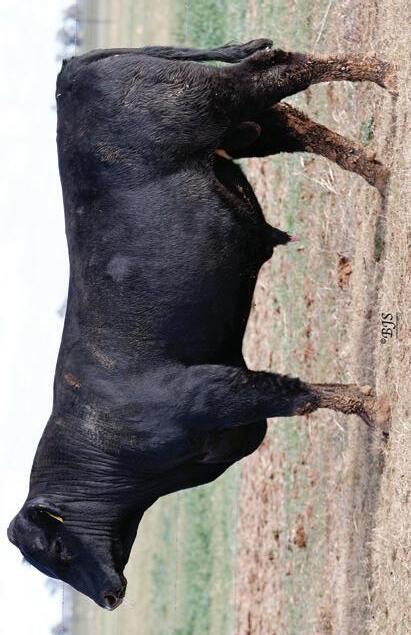
Traits Observed : GL,BWT,400WT,SC,S- can(EMA,Rib,Rump,IMF),Struc- ture(Claw Set x 1, Foot Angle x 1) BALDRIDGE COLONEL C251 # Animal ID: NJS24V37
Date of Birth: 29/03/2024
Mating Type: AI Register: HBR Sex: M Genetic Conditions: AMFU,CAFU,DDFU,NHFU
Selection Indexes
Mid August 2025 TransTasman Angus Cattle Evaluation

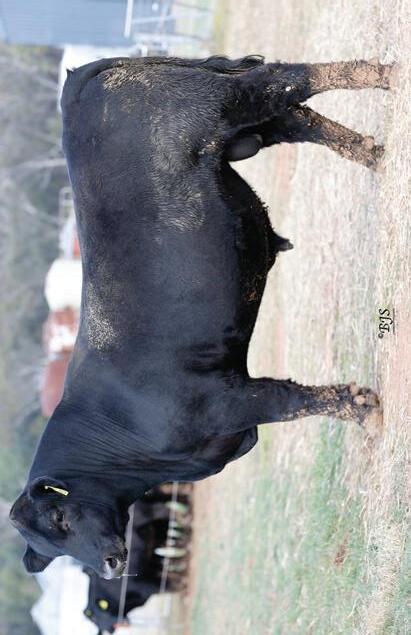
Date of Birth: 30/03/2024
Mating Type: Natural Register: MBR Sex: M Genetic Conditions: AMFU,CAFU,DDFU,NHFU
Traits Observed : BWT,400WT,SC,S- can(EMA,Rib,Rump,IMF),Struc- ture(Claw Set x 1, Foot Angle x 1)
Mid August 2025 TransTasman Angus Cattle Evaluation

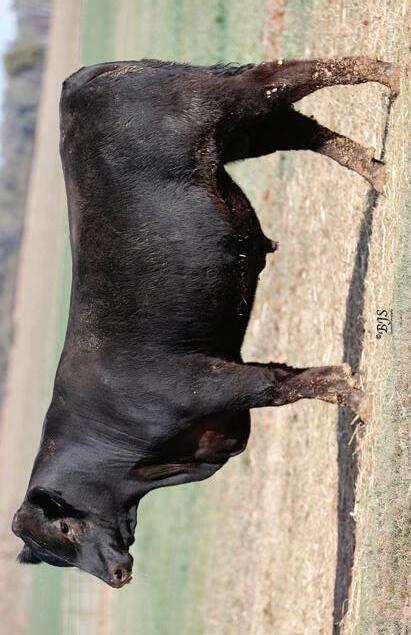
Date of Birth: 26/03/2024
Traits Observed : BWT,200WT,400WT,SC,S- can(EMA,Rib,Rump,IMF),Struc- ture(Claw Set x 1, Foot Angle x 1)
Mid August 2025 TransTasman Angus Cattle Evaluation


Date of Birth: 05/04/2024
Mating Type: AI
Traits Observed : GL,B- WT,200WT(x2),400WT,SC,S- can(EMA,Rib,Rump,IMF),Struc- ture(Claw Set x 1, Foot Angle x 1)
Mid August 2025 TransTasman Angus Cattle Evaluation

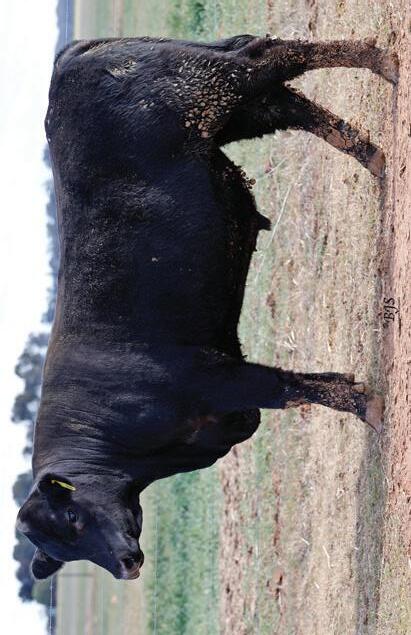
Date of Birth: 07/04/2024
Mating Type: Natural Register: APR Sex: M Genetic Conditions: AMFU,CAFU,DDFU,NHFU
Traits Observed : BWT,200WT,400WT,SC,S- can(EMA,Rib,Rump,IMF),Struc- ture(Claw Set x 1, Foot Angle x 1)
Mid August 2025 TransTasman Angus Cattle Evaluation


Mid August 2025 TransTasman Angus Cattle Evaluation Traits Observed : BWT,400WT,SC,S- can(EMA,Rib,Rump,IMF),Struc- ture(Claw Set x 1, Foot Angle x 1)


Date of Birth: 16/04/2024
Traits Observed : BWT,200WT,400WT,SC,S- can(EMA,Rib,Rump,IMF),Struc- ture(Claw Set x 1, Foot Angle x 1)
Mid August 2025 TransTasman Angus Cattle Evaluation

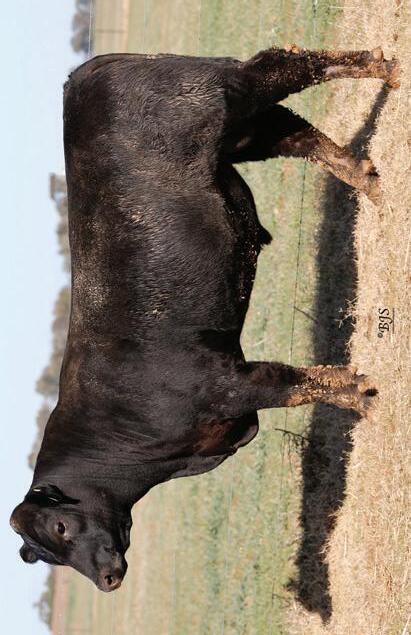
Mid August 2025 TransTasman Angus Cattle Evaluation Traits Observed
can(EMA,Rib,Rump,IMF)


Animal ID: NJS24V102
Date of Birth: 12/05/2024
Mating Type: Natural Register: HBR Sex: M
Conditions: AMFU,CAFU,DDFU,NHFU
Traits Observed : BWT, 400WT, SC, Scan (EMA, Rib, Rump, IMF), DOC,Structure (Claw Set x 1, Foot Angle x 1)
Mid August 2025 TransTasman Angus Cattle Evaluation

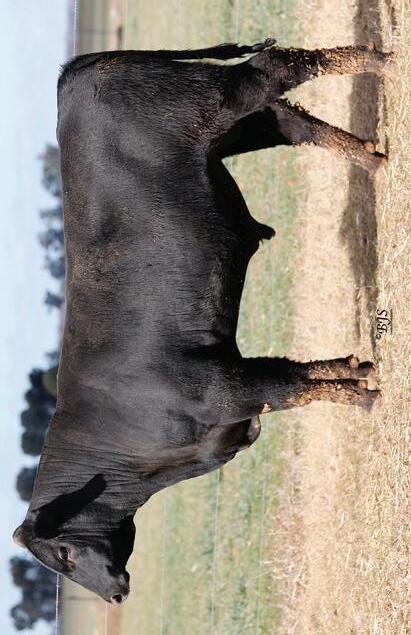
good growth and RBY EBV’s, Great Indices, Bwt 36kg, docile, On 17/5 532 kgs, HH 127, SS
What is the TransTasman Angus Cattle Evaluation?
The TransTasman Angus Cattle Evaluation is the genetic evaluation program adopted by Angus Australia for Angus and Angus influenced beef cattle. The TransTasman Angus Cattle Evaluation uses Best Linear Unbiased Prediction (BLUP) technology to produce Estimated Breeding Values (EBVs) of recorded cattle for a range of important production traits (e.g. weight, carcase, fertility).
The TransTasman Angus Cattle Evaluation is an international genetic evaluation and includes pedigree, performance and genomic information from the Angus Australia and Angus New Zealand databases, along with selected information from the American and Canadian Angus Associations.
The TransTasman Angus Cattle Evaluation utilises a range of genetic evaluation software, including the internationally recognised BLUPF90 family of programs, and BREEDPLAN® beef genetic evaluation analytical software, as developed by the Animal Genetics and Breeding Unit (AGBU), a joint institute of NSW Agriculture and the University of New England, and Meat and Livestock Australia Limited (MLA).
What is an EBV?
An animal’s breeding value can be defined as its genetic merit for each trait. While it is not possible to determine an animal’s true breeding value, it is possible to estimate it. These estimates of an animal’s true breeding value are called EBVs (Estimated Breeding Values).
EBVs are expressed as the difference between an individual animal’s genetics and a historical genetic level (i.e. group of animals) within the TACE genetic evaluation, and are reported in the units in which the measurements are taken.
Using EBVs to Compare the Genetics
TACE EBVs can be used to estimate the expected difference in the genetics of two animals, with the expected difference equating to half the difference in the EBVs of the animals, all other things being equal (e.g. they are joined to the same animal/s).
For example, a bull with a 200 Day Growth EBV of +60 would be expected to produce progeny that are, on average, 10 kg heavier at 200 days of age than a bull with a 200 Day

Growth EBV of +40 kg (i.e. 20 kg difference between the sire’s EBVs, then halved as the sire only contributes half the genetics).
Or similarly, a bull with an IMF EBV of +3.0 would be expected to produce progeny with on average, 1% more intramuscular fat in a 400 kg carcase than a bull with a IMF EBV of +1.0 (i.e. 2% difference between the sire’s EBVs, then halved as the sire only contributes half the genetics).
Using EBVs to Benchmark an Animal’s Genetics with the Breed EBVs can also be used to benchmark an animal’s genetics relative to the genetics of other Angus or Angus infused animals recorded with Angus Australia.
To benchmark an animal’s genetics relative to other Angus animals, an animal’s EBV can be compared to the EBV reference tables, which provide:
• the breed average EBV
• the percentile bands table
The current breed average EBV is listed on the bottom of each page in this publication, while the current EBV reference tables are included at the end of these introductory notes. For easy reference, the percentile band in which an animal’s EBV ranks is also published in association with the EBV.
An accuracy value is published with each EBV, and is usually displayed as a percentage value immediately below the EBV.
The accuracy value provides an indication of the reliability of the EBV in estimating the animal’s genetics (or true breeding value), and is an indication of the amount of information that has been used in the calculation of the EBV.
EBVs with accuracy values below 50% should be considered as preliminary or of low accuracy, 50-74% as of medium accuracy, 75-90% of medium to high accuracy, and 90% or greater as high accuracy.
Description of TACE EBVs
EBVs are calculated for a range of traits within TACE, covering calving ease, growth, fertility, maternal performance, carcase merit, feed efficiency and structural soundness. A description of each EBV included in this publication is provided on the following page.

CEDir %
CEDtrs %
GL days
BW kg
200 Day kg
400 Day kg
600 Day kg
MCH cm
MBC score
MCW kg
Milk kg
DtC days
SS cm
CWT kg
EMA cm2
Rib Fat mm
P8 Fat mm
Genetic differences in the ability of a sire’s calves to be born unassisted from 2 year old heifers.
Genetic differences in the ability of a sire’s daughters to calve unassisted at 2 years of age.
Genetic differences between animals in the length of time from the date of conception to the birth of the calf.
Genetic differences between animals in calf weight at birth.
Genetic differences between animals in live weight at 200 days of age due to genetics for growth.
Genetic differences between animals in live weight at 400 days of age.
Genetic differences between animals in live weight at 600 days of age.
Genetic differences between animals in the height of mature females.
Genetic differences between animals in the body condition of mature females.
Genetic differences between animals in live weight of cows at 5 years of age.
Genetic differences between animals in live weight at 200 days of age due to the maternal contribution of its dam.
Genetic differences between animals in the time from the start of the joining period (i.e. when the female is introduced to a bull) until subsequent calving.
Genetic differences between animals in scrotal circumference at 400 days of age.
Genetic differences between animals in hot standard carcase weight at 750 days of age.
Genetic differences between animals in eye muscle area at the 12/13th rib site in a 400 kg carcase.
Higher EBVs indicate fewer calving difficulties in 2 year old heifers.
Higher EBVs indicate fewer calving difficulties in 2 year old heifers.
Lower EBVs indicate shorter gestation length.
Lower EBVs indicate lighter birth weight.
Higher EBVs indicate heavier live weight.
Higher EBVs indicate heavier live weight.
Higher EBVs indicate heavier live weight.
Higher EBVs indicate taller mature females.
Higher EBVs indicate more body condition of mature females.
Higher EBVs indicate heavier mature weight.
Higher EBVs indicate heavier live weight.
Lower EBVs indicate shorter time to calving.
Higher EBVs indicate larger scrotal circumference.
Higher EBVs indicate heavier carcase weight.
Higher EBVs indicate larger eye muscle area.
Genetic differences between animals in fat depth at the 12/13th rib site in a 400 kg carcase. Higher EBVs indicate more fat.
Genetic differences between animals in fat depth at the P8 rump site in a 400 kg carcase. Higher EBVs indicate more fat.
RBY % Genetic differences between animals in boned out saleable meat from a 400 kg carcase. Higher EBVs indicate higher yield.
IMF % Genetic differences between animals in intramuscular fat (marbling) at the 12/13th rib site in a 400 kg carcase.
NFI-F kg/day
Genetic differences between animals in feed intake at a standard weight and rate of weight gain when animals are in a feedlot finishing phase.
Doc % Genetic differences between animals in temperament.
Claw Set score Genetic differences in claw set structure (shape and evenness of claws).
Foot Angle score Genetic differences in foot angle (strength of pastern, depth of heel).
Higher EBVs indicate more intramuscular fat.
Lower EBVs indicate more feed efficiency.
Higher EBVs indicate better temperament.
Lower EBVs indicate less curl of the claw set.
Lower EBVs indicate more heel depth.
Leg Angle score Genetic differences in rear leg structure when viewed from the side (angle at front of the hock). Lower EBVs indicate a less angular leg angle.
$A $
$A-L $
Genetic differences between animals in net profitability per cow joined in a typical commercial self replacing herd using Angus bulls. This selection index is not specific to a particular market end-point, but identifies animals that will improve overall net profitability in the majority of commercial, self replacing, grass and grain finishing beef production systems.
The $A-L index is similar to the $A index but is modelled on a production system where feed is surplus to requirements for the majority of the year, or the cost of supplying additional feed when animal feed requirements increase is low.
While the $A aims to maintain mature cow weight, the $A-L does not aim to limit the increase in mature cow weight as there is minimal cost incurred if the feed maintenance requirements of the female breeding herd increase as a result of selection decisions.
Higher selection indexes indicate greater profitability.
Higher selection indexes indicate greater profitability.


Follow us on Facebook to stay in the loop with all the happenings at Devanah Angus throughout the year!
@ Devanah Angus and Murray Grey Cattle Stud
